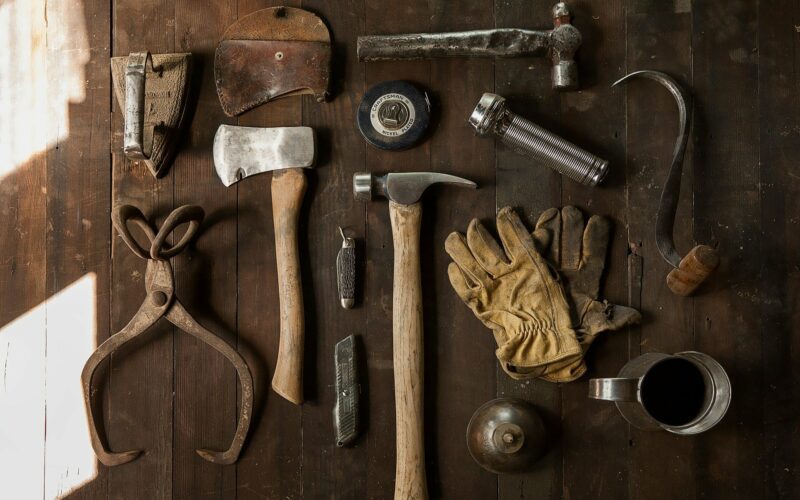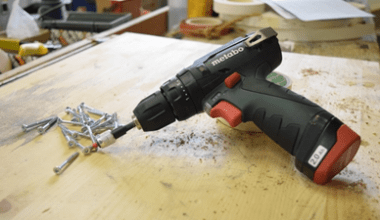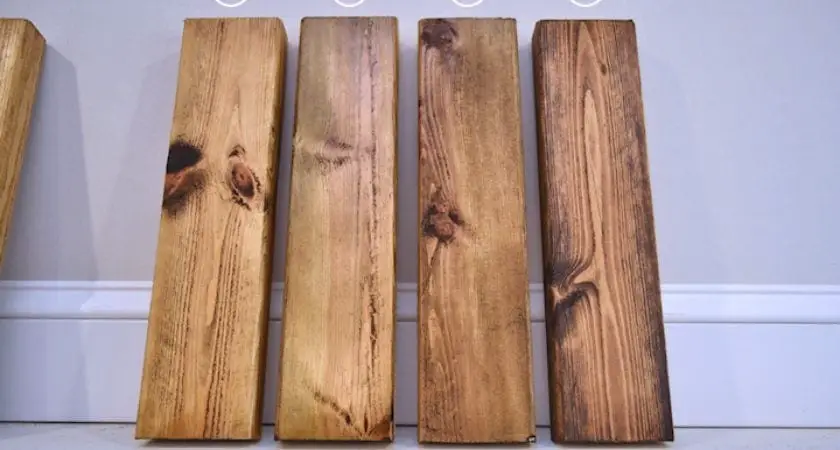If you have plans of building a deck, know that it’s an expensive investment, as you’ll have to buy pressure treated wood. Ground contact wood is a type of pressure treated wood that is quite popular for deck building purposes. In this post, we’ll take you through everything you could possibly want to know about ground contact wood. If you have questions such as “how long does ground contact wood last?”, we’ll answer those as well, along with steps you can take to prolong its lifespan. So, without further ado, let’s get right into it!
What is ground contact wood? How does it differ from above ground wood?
Before we get to the lifespan of ground contact wood and how you can prolong it, it’s important for you to know what it is. Basically, ground contact wood is one of two types of pressure treated wood, with above ground wood being the other type.
Above ground wood is recommended for the following applications:
- Applications that are easy to maintain and/or replace
- Applications that involve the wood getting appropriate drainage and ventilation
- Applications that involve the use of wood at a height of more than 6 inches from the ground
In comparison, ground contact wood is recommended for the following applications:
- Applications that aren’t easy to maintain and/or replace
- Applications that involve the use of wood at a height of less than 6 inches from the ground
- Applications that involve the use of wood either in contact with the ground or just above ground
While some DIYers may use above ground wood for projects and applications that are more suited for ground contact wood, it will ultimately result in quicker decay of the wood. However, using ground contact wood for the recommended applications will ensure the longevity of the project and the investment.
Types of ground contact wood
There are various types of ground contact wood, but UC4A, B, and C are the most popular types. What’s common between these types of ground contact wood is that they all offer superior chemical protection and retention in comparison to above ground wood. However, they have certain differences in terms of their uses. Let’s take a look at them in detail in this section.
Let’s start with UC4A first:
- UC4A is recommended for use in applications where the wood’s exposure to decay will be normal.
- UC4A is best-used in applications where the wood should be within 6 inches from the ground.
- It is recommended for use when the ground contact is light.
- It is best used in areas that are damp, exposed to frequent and consistent moisture levels, and climates in tropical regions.
- If the wood remains in contact with damp vegetation and/or leaves for an extended period, this is the best type of ground contact wood to use.
- In areas where airflow and ventilation are poor.
- For building boardwalks, stringers, decks, and docks.
- For posts, beams, ledger boards, and beams that are hard to maintain, repair, and replace.
Now, let’s move on to UC4B:
- For building piers, docks, and posts that can offer permanent structural support.
- For applications where the risk of decay is high.
- It is recommended for building wooden foundations.
- For applications where the wood may come in contact with saltwater or freshwater spray.
- It is recommended for applications where framing members are hard to replace and/or maintain.
- For building cross-ties, utility poles, and garden posts.
- For exposure to tropical climates for extended periods.
UC4C has the following uses:
- For applications where the wood will be exposed directly to earth, concrete, and/or gravel.
- For applications where structural components will be in direct contact with freshwater or groundwater.
- It is recommended for applications where the exposure to decay is severe.
- It is recommended for applications where it will be exposed to weather cycles of extreme natures.
- For building pilings.
- For building cross-ties and utility poles in areas where the potential for decay is severe.
How long does ground contact wood last?
Now that you know about the different types of ground contact wood, it’s finally time for us to talk about its lifespan. Typically, ground contact wood lasts for an average of 9 – 40 years depending on the applications it is used for and how exposed it is to rot and decay. Maintenance also matters, and the more effort you put towards maintaining ground contact wood, the longer it will last. Many DIYers who have taken appropriate care of their ground contact wood have seen it last beyond 40 years.
But before we get to what you should ideally do to maintain ground contact wood, let’s take a look at the things that may affect its lifespan negatively:
- Exposure to excess moisture: When excess moisture is trapped within wood, it can lead to quick decay. As moisture levels build up within the wood, seasonal changes can cause the wood to split. As the wood splits, the moisture makes its way deeper within the wood, causing further damage.
- Staining or painting wood before it’s dry: Paints contain moisture and a variety of chemical agents, which can all damage wood if they are applied to the wood before it is dry. The chemical agents are known to trap moisture as well.
- Fungal infestations: Fungus may enter enter the wood’s pores through tiny cracks and cause irreversible damage to the wood. Full-blown infestations may occur if the fungus multiply inside the wood. As a result, the wood decays and eventually rots.
- Vegetation and dirt: Wood exposed to vegetation and dirt decays rapidly as the moisture present within them prevents wood from drying. As a result, joists, beams and decks can rot pretty quickly. If the wood is exposed to seeds, the wood’s pores may be exposed to taproots, which accelerate the decay.
- Limited air circulation: Air circulation ensures that the wood dries up, which eliminates moisture and ensures that decay is stalled. However, if air circulation is restricted by surrounding structures and/or vegetation, the wood can rot quite quickly.
Simply put, these things can cause rapid damage to wood if left unchecked. However, there are ways through which you can minimize the damage caused to wood by these issues, which we’ll look at in the next section.
How to prolong the lifespan of ground contact wood?
As we mentioned at the beginning of the post, investing in ground contact wood is an expensive affair. If you want to protect your investment and ensure the longevity of your DIY projects, you have to do certain things to prolong the lifespan of ground contact wood. Read on to know the steps you can take to keep the decay at bay:
- Let the wood dry before applying paint: One of the most common mistakes that DIYers make is that they paint the wood before it dries. Don’t do it! Doing it will only increase the chances of the wood decaying faster as the moisture in it mixes with the chemical agents present in the paint.

- Removing vegetation and dirt from time to time: Dirt and dead vegetation may build up over time and cause damage to the wood. However, if you regularly wash or sweep them away, the damage to the wood will be limited and will most likely decelerate the decaying process.

- Improve airflow: Restrictions surrounding the immediate vicinity of the wood may lead to improper airflow, which can result in moisture being trapped within the wood’s pores. You should check for these restrictions as regularly as possible and remove the ones that can be removed. If you detect restrictions that can’t be removed, we recommend using UC4B ground contact wood, as it stays healthier for longer compared to the other variants even in environments with limited airflow.

- Bi-annual or annual fungicide: Bi-annual or annual fungicide treatments can help in the prevention of fungal infestations. While fungicide treatments aren’t effective for very long, they can eliminate existing fungus within the wood. Be on the lookout for signs of fungal damage and if you detect any, get a fungicide treatment carried out immediately.

- Apply a sealant: A sealant can help the wood to stay protected from absorbing moisture. However, before you apply a sealant, you need to make sure that the wood is completely dry. If you apply the sealant before the wood is entirely dry, any moisture already trapped inside may remain trapped with no chance of drying.

So, it’s clear that when applying paints and/or sealants, the wood should be completely dry. But how do you know whether the wood is completely dry or not? Well, there’s a simple test you can try out. Sprinkle a few water droplets across the entire surface of the wood. If the water is rapidly absorbed into the wood, it means that the wood is dry. However, if you notice the water beading up, it indicates that the wood isn’t completely dry yet. In this situation, you should give the wood some more time to dry up.
With proper maintenance and care, you can expect ground contact wood to last for more than 40 years. If you are devoted to keeping your wood healthy, its lifespan may even go beyond 50 years.








